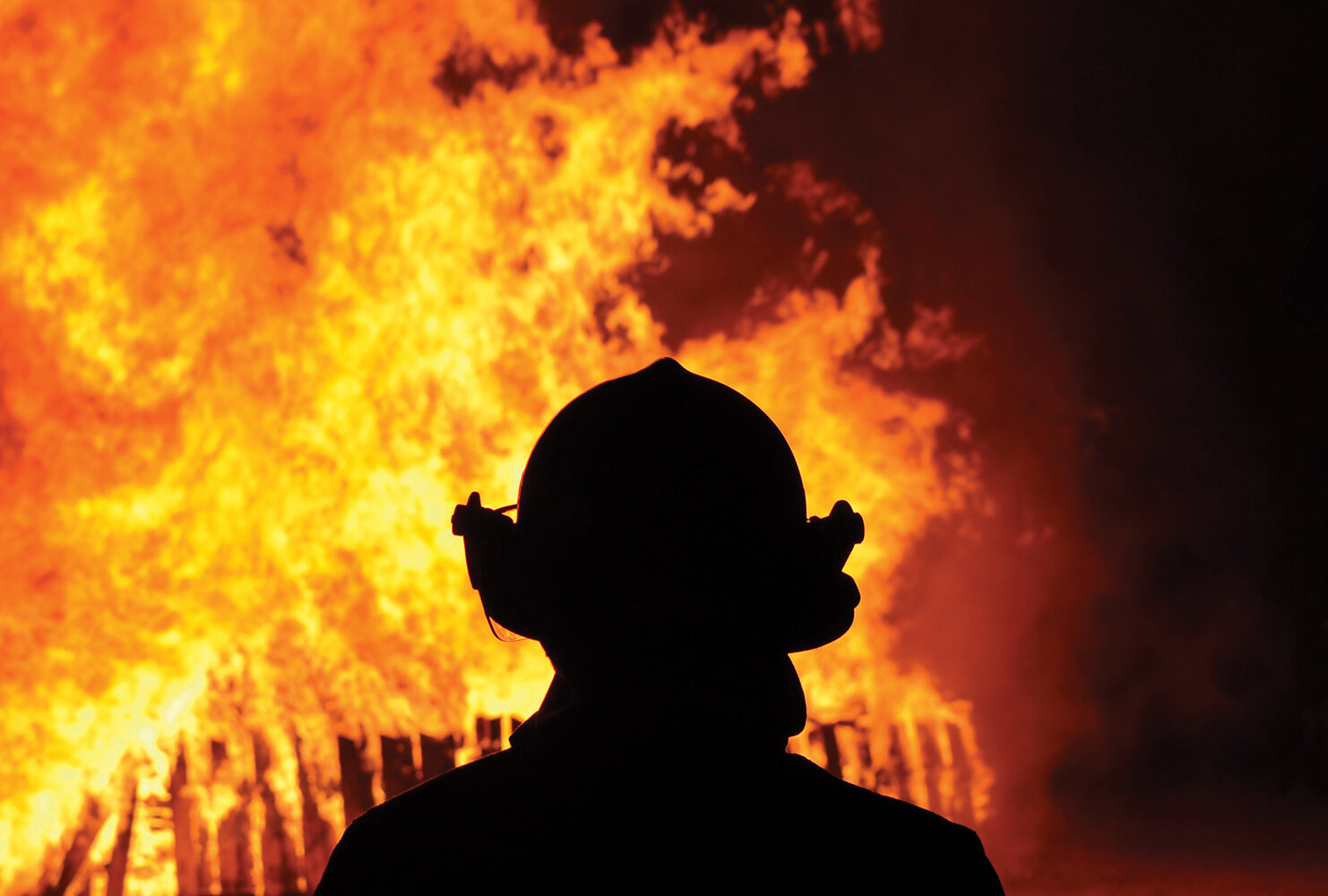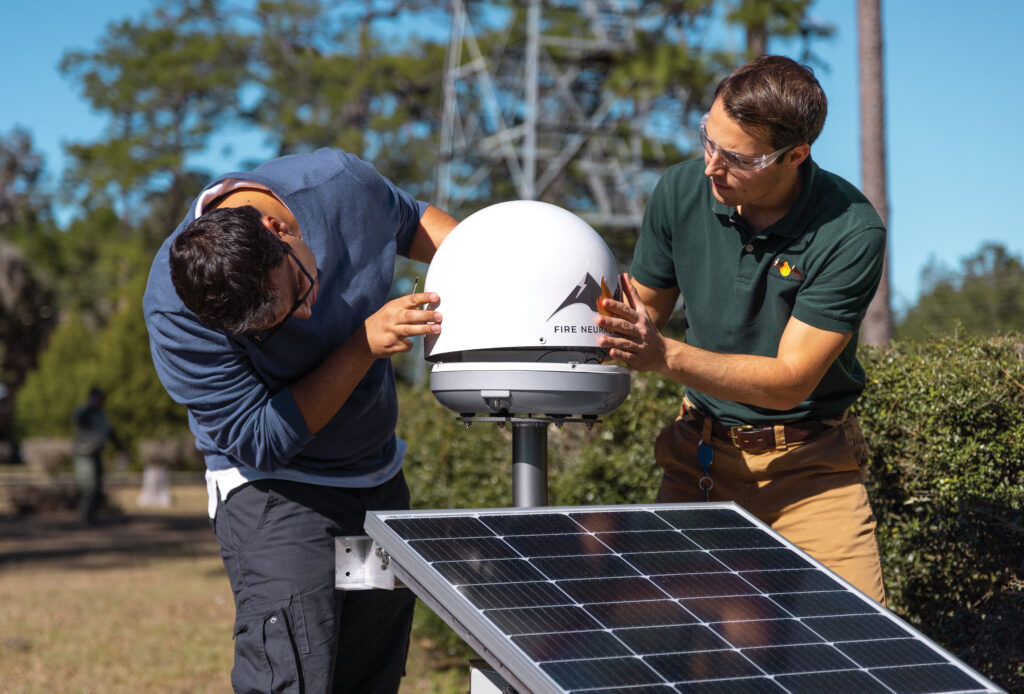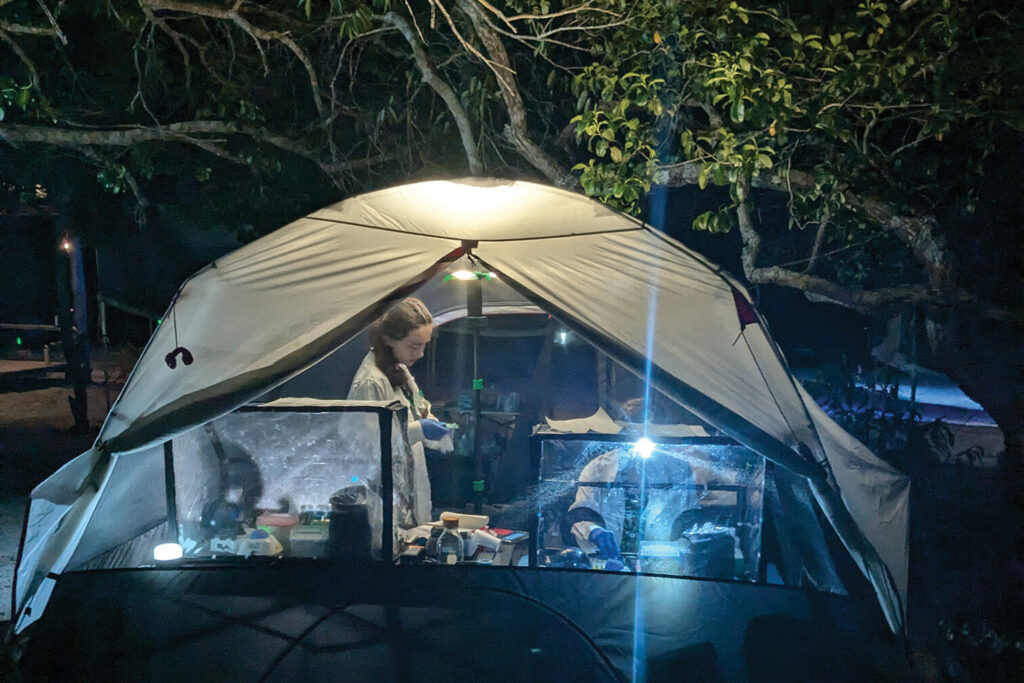W
ildfires like the ones that recently devastated Southern California burn an average of 7 million acres a year in the United States, taking dozens of lives and causing billions of dollars in damage.
While 2025 is off to a bad start, the 2020 wildfires are still the worst on record in the United States, consuming 10 million acres. That year, fires burned 4.3 million acres in California, where they killed 25 people, caused over $12 billion in damage and wiped out nearly 20 years of progress in reducing greenhouse gas emissions.
Only about 10% of wildfires are caused by lightning, but those fires are, on average, nine times larger because they can smolder for days until weather conditions become right for them to explode, says Istvan Kereszy, CEO and co-founder of Fire Neural Network, or FNN, a Gainesville-based company that is taking a high-tech approach to the problem.
Kereszy became interested in wildfires after Imre Bartos, an associate professor of physics at UF who spends most of his time studying collisions among black holes, took a trip to California and got an up-close look at the devastation caused by wildfires.
“As a scientist, I wondered why it took days to spot a fire once it was sparked, giving it time to become catastrophic,” says Bartos, FNN’s chief technology officer.
Bartos took his question to Kereszy, a doctoral student in the physics department at the time who was studying lightning properties at UF’s International Center for Lightning Research and Testing.
“Imre’s question struck a chord with me,” Kereszy says. “He and his astrophysics colleagues could look back millions of years and map out distant galaxies, but we cannot find a fire that’s 20 miles away.”
UF has a long history of lightning research, so Bartos, Kereszy and their colleagues started looking at how they could apply their expertise to the lightning-ignited wildfire challenge. Around the same time, the XPRIZE Foundation, a non-profit organization that has hosted large-scale competitions to solve numerous global challenges since it was established in 1994, announced XPRIZE Wildfire. The 4-year, $11 million competition is meant to incentivize the innovation of wildfire fighting technologies.
“The prize aims to transform current wildfire management approaches through the development of new technologies that can rapidly and accurately detect, characterize, and respond to wildfires before they become destructive,” according to the organization’s website.
The researchers saw XPRIZE Wildfire as an opportunity to leverage even more technology from UF and beyond to address wildfires, so they created GatorX, a team that includes UF, Fire Neural Network, AI-industry leader NVIDIA and Satlantis, a UF spinoff that uses high-resolution satellites to monitor environmental conditions on Earth.
GatorX is developing a fully autonomous solution that combines FNN’s proprietary lightning detection technology with AI-optimized drones to detect, evaluate and extinguish fires in a matter of minutes, before they have a chance to grow out of control. Eventually, they hope to integrate data from Satlantis’ satellites.
Out of nearly 150 initial teams, GatorX was one of only 28 chosen to advance to the next round this spring, where each team will have 10 minutes to autonomously detect and suppress a high-risk fire in a 1,000-square-kilometer, environmentally challenging area.
“With wildfires, it’s all about speed — the faster you find them, the easier they are to fight,” Kereszy says.
GatorX is focusing on high-risk lightning in which the electric current flows for a thousand times longer compared to regular lightning, says FNN co-founder Caroline Comeau.
“It’s high risk because of its extra-long duration and extra-high heat,” she says. “Imagine you’re waving your hand above a candle. You’re fine for half a second, but if you leave it there for 500 seconds you’re going to get burned.”
FNN combines data from its High-Risk-Lightning™ detectors that track the frequency and type of lightning in an area with environmental data such as temperature, precipitation, vegetation and fuel availability to determine fire risk.
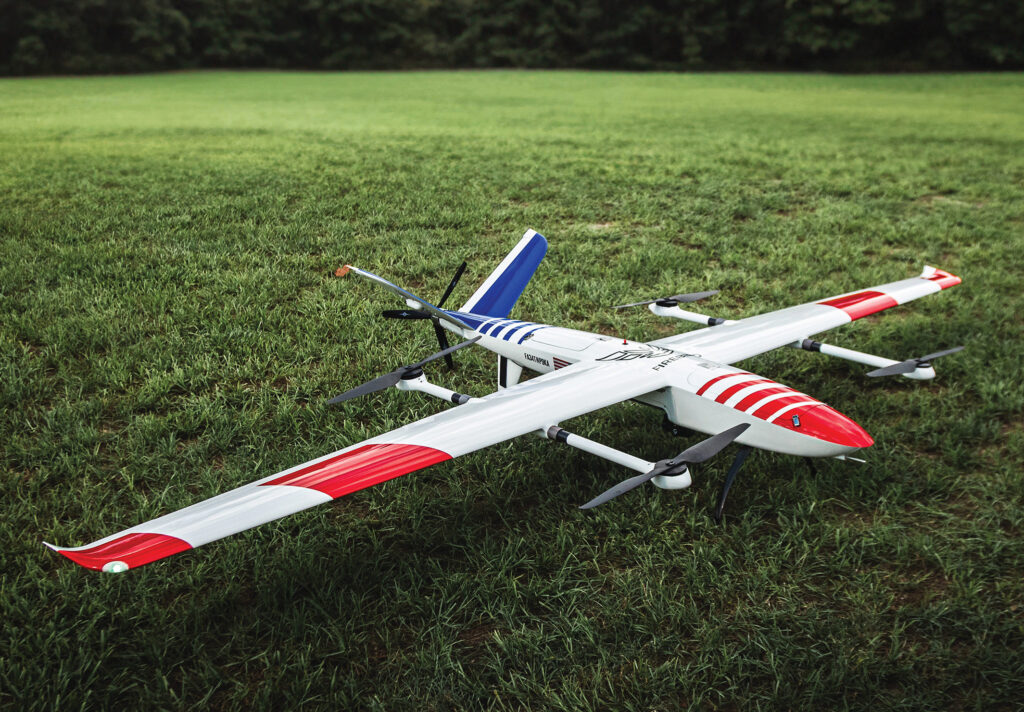

“Using UF’s HiPerGator computer, we’re able to digest and analyze terabytes of data in seconds,” Comeau says. “Firefighters no longer have to spend hours doing this analysis. It allows us to find that single needle in the haystack — to pinpoint where a high-risk strike has occurred, all in 40 seconds.”
For the XPRIZE competition, if the detectors spot a potential wildfire, they will send a signal to a squadron of drones hovering over the search area. The drones, equipped with multiple cameras and NVIDIA AI chips, will converge on the target area to take high-resolution images and determine if lightning has ignited a fire, or if someone is just lighting a campfire or a grill. If the drones determine the fire is a real threat, they signal a larger drone carrying water or other suppressant to descend over the fire and extinguish it.
“It all has to be autonomous, which is where NVIDIA and this kind of Jetson onboard computing can really help, because there’s a lot of data to be processed,” says Comeau. “It’s not only video imaging processing, but also the communications between the video drones and the extinguishing drone. So, there are a lot of moving parts, and when you have a lot of data, you need a fast computer, which is where HiPerGator comes in.”
Chris Malachowsky, NVIDIA co-founder and a UF alumnus, has been watching the XPRIZE efforts closely.
“The newest generation of the HiPerGator is coming online this year and I am very proud that it is being used in the battle against wildfires,” Malachowsky says.
FNN works closely with local agencies that are most familiar with the fire risks of their region. The Florida Forest Service was one of the first groups FNN approached. They’ve also partnered with the Brazilian National Institute for Space Research, the Australian National University-Optus Bushfire Research Centre of Excellence, NASA and the National Oceanic and Atmospheric Administration.
Patrick Deren, deputy chief of field operations for the Florida Forest Service in North Florida, says the agency has been working with FNN to test their research and provide feedback regarding the accuracy of the technology in detecting wildfires.
“We are hopeful that this will result in another tool to detect fires early in order to reduce risks to our firefighters and the public,” says Deren.
“We want to help stop the devastation,” Kereszy says. “What’s cool is that we brought together two of UF’s strengths — lightning research and artificial intelligence — to advance our mission to help stop uncontrolled wildfires across the globe.”
Karen Dooley contributed to this story.
XPRIZE Rainforest
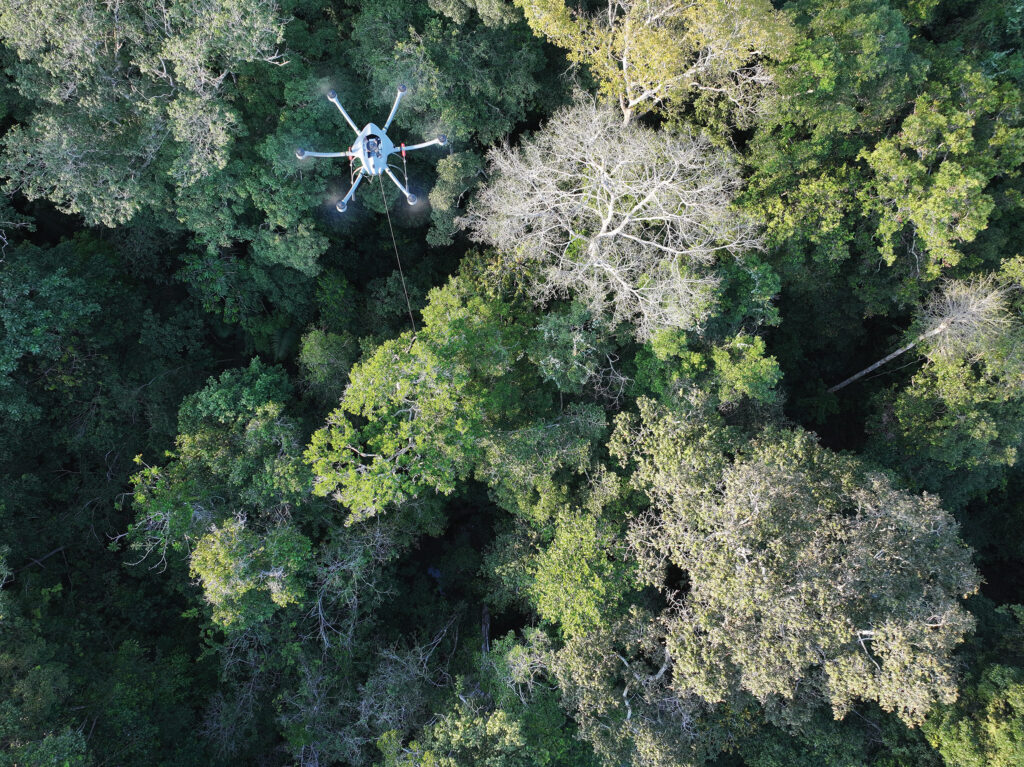
Robert Guralnick, curator of bioinformatics at the Florida Museum of Natural History, is a member of an international team that won first place in the five-year XPRIZE Rainforest competition. The winners were announced in November at a summit held in Rio de Janeiro. More than $7 million was awarded to the top-ranked teams, with $5 million going to the first-place winner.
The XPRIZE Rainforest competition kicked off in 2019, hosting 300 teams across 70 countries. The collective goal of each participant was the acceleration of technological innovation to improve the speed and precision of biodiversity surveys in support of global conservation efforts.
In the last stage of the competition, six finalist teams had 24 hours to deploy their technologies, remotely survey a 100-hectare test plot of tropical rainforest without physically entering the test area, and produce a biodiversity analysis report within 48 hours following the deployment. To win the competition’s grand prize, teams were also tasked with demonstrating scalability to effectively disrupt the often lengthy, laborious and resource-intensive process of data collection and analysis.
“It was such a massive collaborative effort,” Guralnick says. “I have never been involved in such a high-pressure situation, where one team does so much work to produce high-quality data, analytics and insights.”
Guralnick is a member of the Limelight Rainforest team, whose solution to the challenge was to create a monitoring device equipped with lights, audio recorders, cameras, insect traps and collection reservoirs. During the competition, 10 Limelight devices were transported by drone and deposited in the forest canopy. At sundown, the lights were activated, creating clear beacons that attracted insects within the 100-hectare plot.
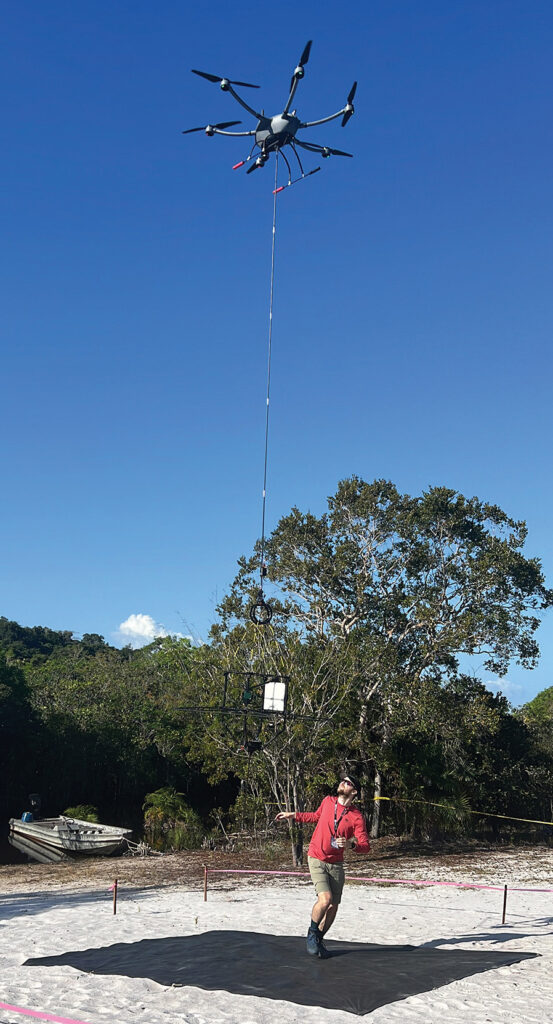
During finals, the onboard camera systems photographed and automatically classified 250,000 insects in just 24 hours. Team members also used canopy mapping software to identify thousands of trees and piloted drones to collect water samples from the forest floor. Because organisms are constantly shedding genetic material into their environment, team members running an onsite genetic lab were able to sequence isolated strands of DNA suspended in the water samples and use it to identify many of the organisms that lived nearby.
Team members running the genetic lab also sequenced environmental DNA from air samples and from the surface of plant leaves. By the end of the 48-hour limit, the team produced more DNA sequences than any of their competitors.
“It was a challenging and thrilling experience to run a full molecular lab in the middle of the Amazon rainforest. But we did it, and it was amazing,” says Niyomi House, a postdoctoral associate at the Florida Museum.
The team used the Limelights’ audio recorders to automatically identify birds, using a birdsong database created in partnership with Indigenous bird guides in Ecuador.
When the results had been tallied, Limelight rainforest had collectively identified more than 250 species and 700 distinct taxa.
Though the express goal was to measure as much biodiversity as possible, Guralnick says devices like the Limelight and others developed for the rainforest competition have the potential to go far beyond static inventories.
“One of the questions we want to answer is not so much what’s out there, but what services the forest is providing to animals,” he says. “For example, we can detect buzz feeding of bats in and around the site, which is an indication that it’s a high-quality area.”
By mapping the position of each monitoring device, the team could also triangulate the movement of birds and track bats as they searched for food.
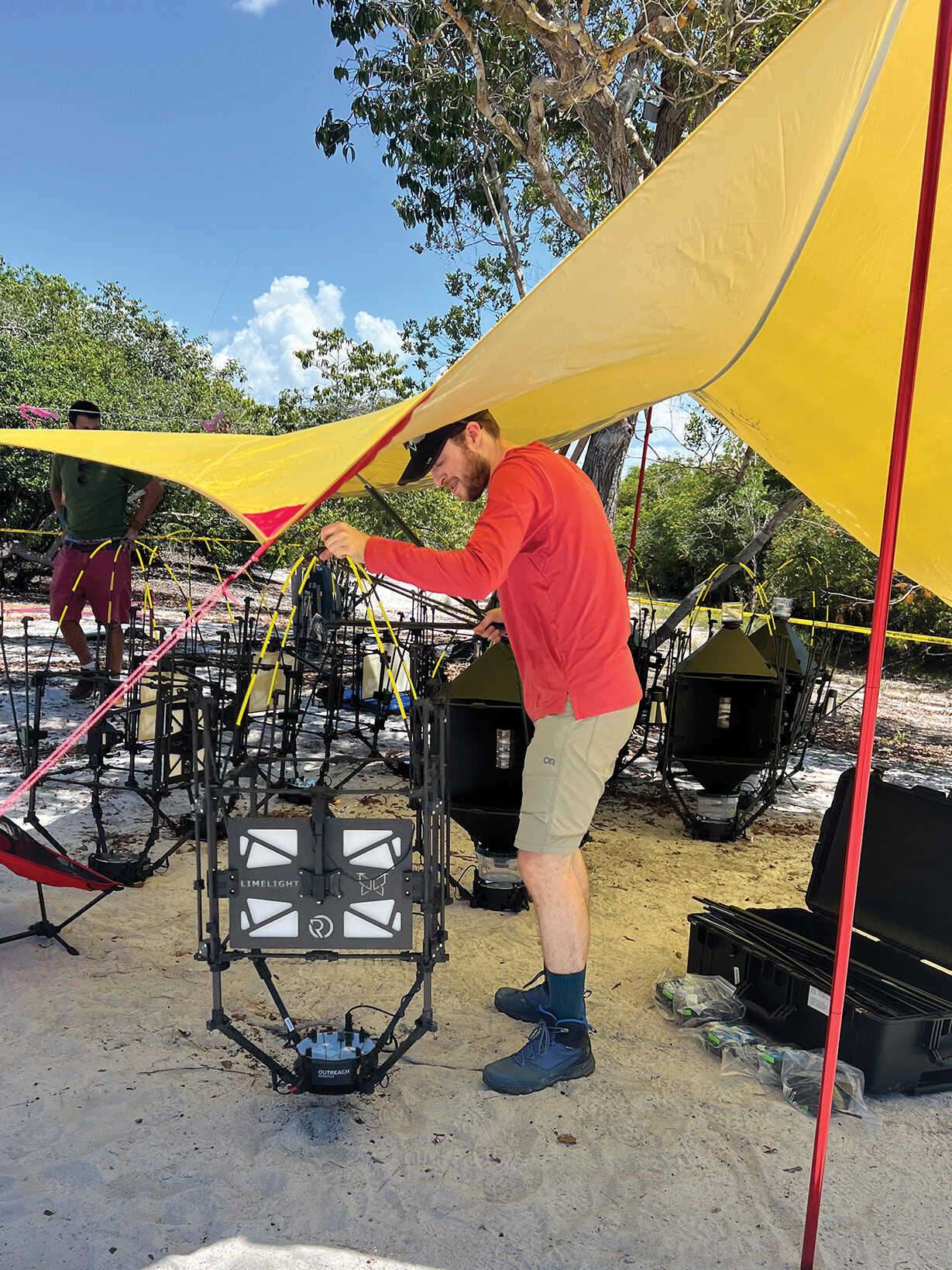
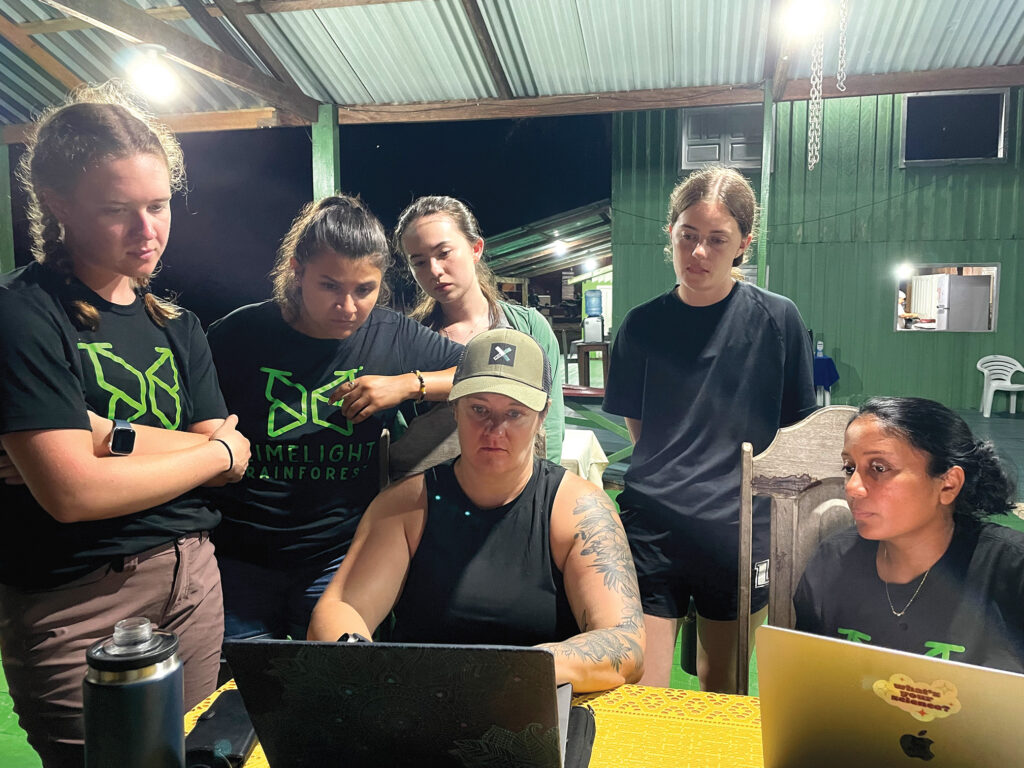

The rainforest competition was developed to address the critical need for rapid biodiversity inventories in areas that remain poorly studied or are threatened by development. Devices like the Limelight will improve the accuracy of environmental assessments, make it easier to identify the ecosystem services provided within a plot of land and monitor ecosystem health in even the most remote areas.
“Our ability to deploy monitoring devices to explore the world is just in its infancy,” Guralnick says. “We’ve never before had the ability to get this type of dense, real-time, on-the-ground information on what’s happening in our ecosystems at this scale. ”
Other UF researchers who participated with Limelight included Florida Museum researchers Raphael LaFrance and Nick Gardner, and former UF doctoral students Caitlin Campbell and Julie Allen.
Jerald Pinson

